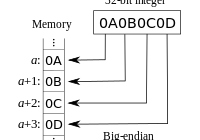Monthly Archives: February 2016
What’s in a block?
Introduction If you’ve spent some time reading up on the fundamentals of bitcoins and the block chain but felt it was way over your head, here it is from another angle. Reading the likes of: https://en.bitcoin.it/wiki/Block https://en.bitcoin.it/wiki/Transaction https://en.bitcoin.it/wiki/Block_hashing_algorithm https://en.bitcoin.it/wiki/Protocol_documentation can be a bit daunting so I’ve created some pretty pictures instead. The secret sauce at… Read More »
Linked List: An important concept to grasp
Understanding linked lists is very important when learning C. Understand it, master it and be able to teach it. This link explains it very well. http://cslibrary.stanford.edu/103/LinkedListBasics.pdf The key is to get your hands dirty and not only write the code samples, but experiment and alter the values and play around with it. Here is a link… Read More »
What is nice?
Knowing a nice person is good, being nice, even better but in the computer world, there is this funky concept of “nice” which determines the scheduling priority of a process. The scope here is that you are doing some programming and you want to be able to control or set the priority. You can set… Read More »
Some of what I’ve learnt in the last 3 years of API cloud integration
In the last 3 years I have researched hundreds of APIs from SaaS based applications from around the world, analysed in detail around 60 APIs and deep dived into around 20 APIs. I’ve experienced working with great APIs, not so great APIs and everything in between. Background To understand what I’ve learnt, let’s take a… Read More »
How swab32 or bswap_32 works
If you have come across some code with reference to swab32 or bswap_32 and wondered how it works, here is the answer. swab32 will probably be a function that calls bswap_32 which will probably be a macro. The macro will probably be defined as: ( (((x) << 24) & 0xff000000u) | (((x) << 8) &… Read More »
Big Endian and Little Endian in Pictures
You may have come across this image on Wikipedia when reading about endianness. While it is great, in practice when I’m viewing content in memory, it is displayed horizontally instead of vertically. So for those visual people out there, here is another take. Big endian is defined at placing the Most Significant… Read More »
JIRA Order by Clause for Statuses
There are 2 ways of ordering your search results in the issue navigator within JIRA. You can click on the column header to sort the issues or you can use the “Order By” clause via JQL (JIRA Query Language). A JQL example would be “project = demo ORDER BY Assignee ASC” However, if you want… Read More »
How be32enc and le32enc works in C
This is all about endianness. That is, how the bits are arranged in memory. You can arrange these bits in memory 2 ways. In big endian or in little endian. Go to wikipedia for some background but esssentially big endian is the way the decimal system works and little endian is the reverse of this.… Read More »





